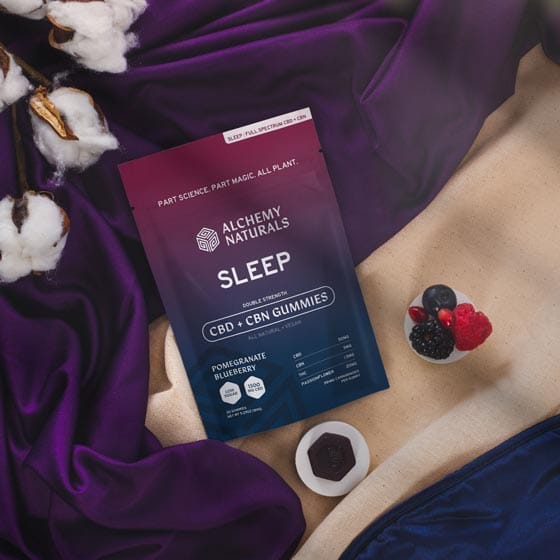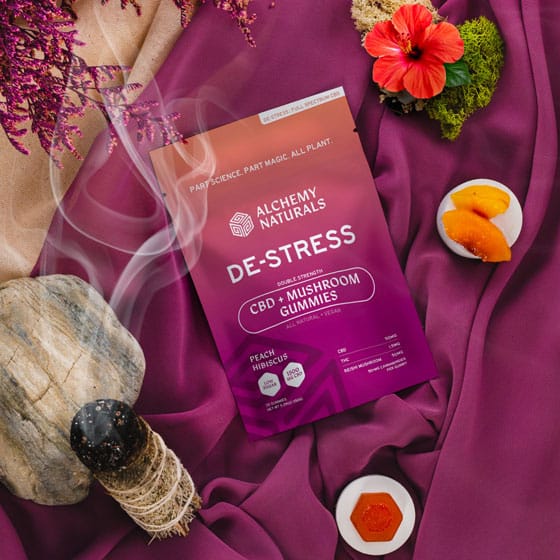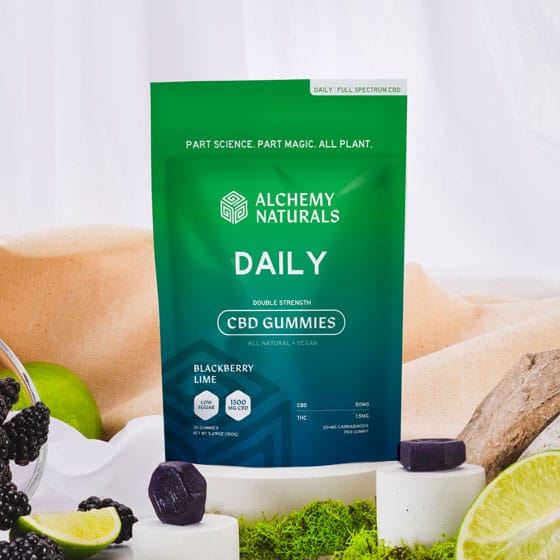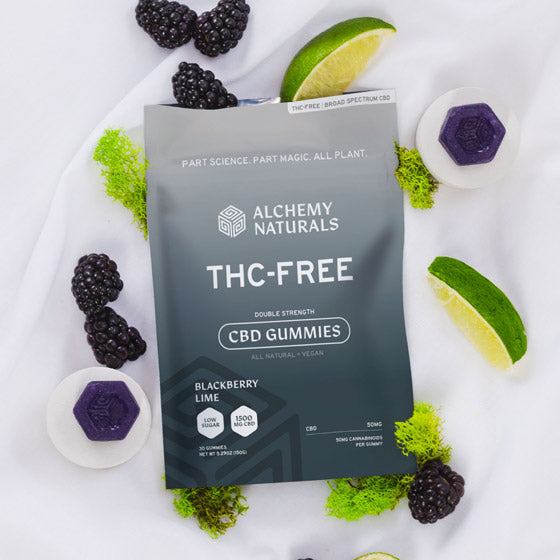In this article you’ll learn:
- The difference between full spectrum and broad spectrum CBD
- What the entourage effect is
- What CBD is
- Common uses & possible side effects from CBD
- The types of CBD
- What to look for when buying a CBD product

Understanding the differences in CBD distinctions, such as broad and full spectrum, will help you when trying to select the best products to suit your needs. In this insightful blog post, we take an in-depth look at what these terms mean and how they affect you and your cannabidiol (CBD) product experience. We’ll start off by answering the most frequently asked questions about full spectrum CBD products, and educate you about their respective benefits. After reading this article, you will understand the difference between full spectrum, broad spectrum and isolate CBD.

Yes, full spectrum CBD products do contain THC, but it's not a lot. The least processed form of CBD is full spectrum Cannabidiol, which contains all terpenes, cannabinoids, and other compounds found within the marijuana or hemp plant. Full spectrum CBD derived from hemp can legally contain up to 0.3% THC, and provides an entourage effect (more on that soon). In states where cannabis is legalized for either medical or recreational use full spectrum CBD edibles with much higher amounts of THC are available, typically sold as ratio products such as, 1:1 or 10:1. This process can simulate some of the psychoactive high feelings associated with smoking weed.
Full spectrum CBD has more therapeutic properties because it contains all of the naturally occurring chemical compounds from the marijuana plant.
What Is The Entourage Effect?

The entourage effect occurs when terpenes, flavonoids, Cannabidiol (CBD), tetrahydrocannabinol (THC) and any other present cannabinoids work together to provide an array of benefits. This collaboration is known as the entourage effect, and there has been medical research supporting its effectiveness. Even a few percentage points of THC lab testing with CBD is enough to be considered full spectrum. It's important to understand that although there may be small traces of THC found in full spectrum CBD edibles, these small percentages are not enough to experience a high.
Is Full Spectrum CBD Legal?
Thanks to the 2018 Farm Bill, Cannabidiol extracted from hemp was made legal in all 50 states. This legalization caused a wave of new CBD products to enter the market, although not all of them are selling legally. It's important to buy from brands like us that provide lab tests of the ingredients in the edibles sold, this ensures you're getting accurate amounts of Cannabidiol and THC.
Broad Spectrum CBD Has No Trace Of Tetrahydrocannabinol

If you're trying to stay away from THC entirely, broad spectrum CBD is the perfect choice. Broad spectrum (THC free) edibles are made from hemp and contain all other terpenes or cannabinoids present in the hemp but removes any THC using a chromatography process. This ensures that zero THC is present in the product. Broad Spectrum is perfect for individuals who can’t afford to fail a drug test, but still want to reap the benefits of Cannabidiol. Eating a full spectrum edible can risk failing a drug test for THC.
What is Cannabidiol (CBD)?

Cannabidiol is one of the most commonly found cannabinoids in the marijuana plant, making up as much as 40% of all cannabinoid content found in marijuana. This cannabinoid is the second most active compound, behind Tetrahydrocannabinol or THC. However unlike THC, Cannabidiol does not cause any of the psychoactive effects associated with marijuana use. In recent medical studies, Cannabidiol has been found to have positive health benefits. One of the most impressive being that it can help slow, and in some cases, kill cancer cells.
Other health benefits being studied show that CBD can help with pain, anxiety, and even depression. Ongoing research is being done on how effective Cannabidiol is at protecting the plasticity of your brain, and how it supports heart health. There have even been tests showing that Cannabidiol can be used to help treat diabetes and acne.
In the following sections, we will discuss the primary uses, downsides, legality, and what components make up CBD.
Uses of CBD
In recent years, Cannabidiol has been found to have many positive effects on health. As mentioned earlier, one of the most impressive qualities that Cannabidiol has is that it can be used to help treat cancer cells. For those with diabetes, Cannabidiol helps patients maintain healthy blood sugar levels. Cannabidiol has also been shown to help protect the plasticity of your brain, and from keeping your brain from deteriorating. Cannabidiol is most commonly known for being a great pain relief solution. Relief using CBD can be accomplished via ingestion or topically.
CBD is thought to also be an effective assistant for those who struggle with mental disorders such as drug addiction, depression, and even anxiety. Cannabidiol has been shown to be effective in managing patients who suffer from mental illnesses, specifically schizophrenia and bipolar disorder. With all of these benefits, you may be asking if there are any negative side effects from using CBD, in short, yes there are, and we will discuss those in the next section.
Side Effects Caused By CBD
Unfortunately, just like most things, there are some known side effects from the use of CBD. While not all the side effects are harmful to the user, it is still good to understand what the side effects could be. First and foremost, some users report that CBD makes them feel dizzy or nauseous. If you are new to Cannabidiol, it is advised that you do not drive or operate heavy machinery until you know how it affects you. CBD is also known to cause fatigue in some users, this side effect can be easily combated by using Cannabidiol later in the evening as opposed to in the morning or during the day, especially if you are doing something that requires you to be alert.
Other side effects worth mentioning are that some users report experiencing mild to moderate diarrhea from CBD and in some cases changes in weight or appetite. Cannabidiol is also known to interfere with your body's ability to metabolize certain medications, so it is best that you talk with your doctor before giving CBD a try.
Types of CBD

The first and most pure form is CBD isolate. The other two types are full and broad spectrum CBD. The difference between these two can be minor, but this slight variance can make a big difference in how they affect the user. Let’s take a look at each of the three types of CBD more closely to see what makes them different.
Isolate
This is pure CBD with absolutely zero THC or any other cannabinoids or terpenes. At the same time, this CBD is the most heavily processed form of CBD available on the market. This is because all other compounds found in the marijuana plant have to be removed, leaving only pure CBD. This type of CBD can also be distinguished by its lack of taste or smell. One of the biggest disadvantages of CBD isolate is that you miss out on the entourage effect. The entourage effect is essentially the idea that the mix of different cannabinoids and terpenes actually work together to become more effective within the body.
Broad Spectrum CBD
The second type of CBD is broad spectrum. Broad spectrum CBD is the second most pure form of CBD, while it contains zero trace amounts of THC, it will not cause any psychoactive effects. Broad spectrum CBD also contains other components found within the marijuana plant such as terpenes and cannabinoids like CBC and CBN. The addition of these cannabinoids and terpenes are what give smell and taste to broad spectrum CBD in comparison to CBD isolate. The preservation of cannabinoids and terpenes in broad spectrum CBD allows for the entourage effect to occur, creating a more effective CBD experience.
Full Spectrum CBD
Similar to broad spectrum CBD, full spectrum CBD also contains an array of cannabinoids and terpenes but it takes it a step further. Full spectrum Cannabidiol contains all compounds naturally found within the cannabis plant, this includes THC. But THC levels in full spectrum CBD must be kept below 0.3%, in accordance to the FDA. The entourage effect is actually most powerful in full spectrum CBD as it contains all compounds found within weed. This is the biggest advantage for full spectrum Cannabidiol, as studies show that it offers the most positive effects for your body.
What Types of CBD Full Spectrum Products Can You Buy?
There are many types of full spectrum CBD products available for sale including oils, vapes, and edibles. Each form of CBD has its differences and understanding what they are is beneficial for consumers interested in using CBD. Knowing the difference can help you as the customer make a better choice when picking out your next Cannabidiol product. There are also different types of CBD products available that are crafted to target anxiety, stress, insomnia, and more. But first, let's dive into a reputable source for CBD in the USA that ship their products.
Buy CBD Full Spectrum Edibles From Oregon Online

If you’re looking for a reputable seller of full spectrum or broad spectrum CBD mentioned in the article, one of the best places to get quality CBD products is from alchemynaturals.com. Experience high quality CBD edibles made entirely from organic ingredients, sourced from Oregon, one of the best cannabis and hemp markets. They offer high quality CBD products at affordable prices. Their selection of CBD oils and gummies are offered in both full and broad spectrum, with products designed to support your goals. From a daily CBD gummy, to pain relief, and even CBD products that will help you get a good night sleep. Depending on your needs, and what type of experience you want from your CBD, knowing the differences between CBD types can be quite beneficial in helping you to get the results you desire.
How To Buy The Right CBD Edible

When purchasing Cannabidiol products you should know what your needs are, this will help determine which product you should purchase. CBD isolate is mainly sold in a powdered form, and can be used to make your own topical or CBD infused food and drinks. Full spectrum CBD is the best choice for those who want the full medicinal benefits of CBD, as the entourage effect plays a crucial role in helping make CBD as effective as possible. Broad spectrum CBD is basically in between, and can provide many of the beneficial qualities associated with CBD, while at the same time being more mild and great for those who cannot consume THC.
When looking for CBD, be sure to check if the company provides lab test results certifying the claims of what’s actually in the product. By checking lab test results, you can find out what is actually inside the product you are buying, including a breakdown of CBD and THC levels, and in some cases what other cannabinoids are included in the product. While not every company provides test results for their product, it is a good practice to only purchase from those who do. This ensures that you are getting what you pay for and that the product is also safe to use. There are many companies selling CBD that do not actually include the marketed amount or CBD, sometimes it may not include any at all.
Why Does The Type of CBD Matter?
The type of CBD you are using can be very important as the effects of each type can be completely different. Full spectrum, with all of the naturally occurring compounds is the most beneficial for your health, as it contains all of the cannabinoids known to help with an array of health related needs, from pain to cancer and anxiety. Broad spectrum, on the other hand, is good for those who do not want to consume THC but still would like the experience of the entourage effect.
Conclusion
CBD, just like THC, has many different variations. When you shop for THC, you do not just assume that delta-8 and delta-9 THC are the same and will have the same effects. The same should be true for CBD as well. The term CBD is a very broad umbrella that encompasses many different cannabinoids. By understanding the difference between full and broad spectrum, you are taking control of your CBD experience, and making sure you have a full grasp of what you are using. By doing this, you are putting yourself in the driver’s seat and allowing yourself to navigate through the somewhat confusing journey of cannabis, and all of the twists and turns it has to offer.
To recap, there are three categories of CBD available on the market today. The differences between them are distinguished by how many cannabinoids (including THC) and terpenes are found within them. The purest and most heavily processed is CBD isolate. The next would be broad spectrum CBD, which could contain zero amounts of THC. The biggest difference between CBD isolate and broad spectrum CBD is that broad spectrum contains some of the cannabinoids and terpenes found in marijuana.
Keep in mind that while Cannabidiol is known to offer certain beneficial qualities, the effects vary and are dependent on the individual. Always be sure to check for lab test results when buying a CBD product to ensure that you are getting what you paid for and that the product is safe to use. Hopefully this article has helped clear up some of the confusing jargon within the cannabis community and helps you become a more informed buyer of CBD products.









